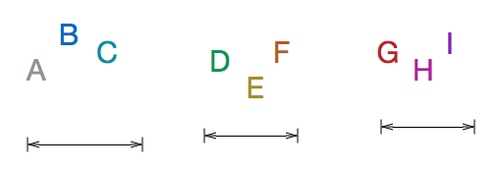Min ( Max )
 The numbers from 1 to 9 (both inclusive) are divided into three groups with 3 numbers in each group . The numbers in each group are multiplied. The maximum of these numbers is chosen. Find the minimum value, this maximum can take.
The numbers from 1 to 9 (both inclusive) are divided into three groups with 3 numbers in each group . The numbers in each group are multiplied. The maximum of these numbers is chosen. Find the minimum value, this maximum can take.
The answer is 72.
This section requires Javascript.
You are seeing this because something didn't load right. We suggest you, (a) try
refreshing the page, (b) enabling javascript if it is disabled on your browser and,
finally, (c)
loading the
non-javascript version of this page
. We're sorry about the hassle.
4 solutions
What would be the answer if the maximum of the minimum products is asked?
Thanks for the solution.
It is not clearly stated that groupings must have equal products... When i divide into groups i can just put 3 numbers per group... I think u shud state it or my understanding might be wrong too...
Log in to reply
It goes like this; if a,b,c are the 3 products obtained and applying AM-GM inequality on a,b and c we will arrive on Daniel's solution.
My approach is same. To get the minimum of the maximum of the three products P 1 , P 2 and P 3 , our task is to even out the three products. That is to make P 1 ≈ P 2 ≈ P 3 . My first approach was to match the smallest number 1 with the largest number 9 , second smallest 2 with the second largest 8 and 3 with 7 , and then choose the remaining number for each group to get the minimum maximum. I got the following:
3 × 4 × 7 = 8 4 2 × 5 × 8 = 8 0 1 × 6 × 9 = 5 4
The answer was 84, which is wrong, and I have two more tries.
During a walk in the park, I realized that P 1 ≈ P 2 ≈ P 3 ≈ 3 9 ! ≈ 7 1 . 3 3 . Now still using the previous idea of matching the smallest 1 with the largest 9 , the remaining number should be 8 to make the product 1 × 8 × 9 = 7 2 ≈ 7 1 . 3 3 . Move on the next largest number 7 , the only possible combination to have the product < 7 2 is 2 × 5 × 7 = 7 0 . The remaining three numbers give 3 × 4 × 6 = 7 2 . So the answer is 7 2 .
If the products were to be distinct the best answer would have been 1×9×7, 3×4×6, 2×5×8, which gives the answer 80, which was my 1st try.
brute force using python:
1 2 3 4 5 6 |
|
with
permute
is the function I wrote in
my note
I actually don't understand how to solve these problems... most of the cases my approaches resemble a brute force approach. I started with three triples (1,9,5), (3,4,7), (2,6,8) , the maximum being 96. I "inspected" that interchanging 5 and 8 will result in a maximum of 84. After that, I interchanged 5 and 7, obtained the final result. It is more of a "local search" than logic.
Ideally, all three products will equal 3 9 ! ≈ 7 1 . 3 2 . However, since they are all integers, at least one product will be ≥ 7 2 .
This also means that the lower bound for the minimum of all maximums is 7 2 .
But achieving 7 2 is possible: we take the groups ( 1 , 8 , 9 ) , ( 3 , 4 , 6 ) , ( 2 , 5 , 7 ) . (This gives a product of ( 7 0 , 7 2 , 7 2 ) .)
Since 7 2 is necessary and achievable, then it must be the answer.